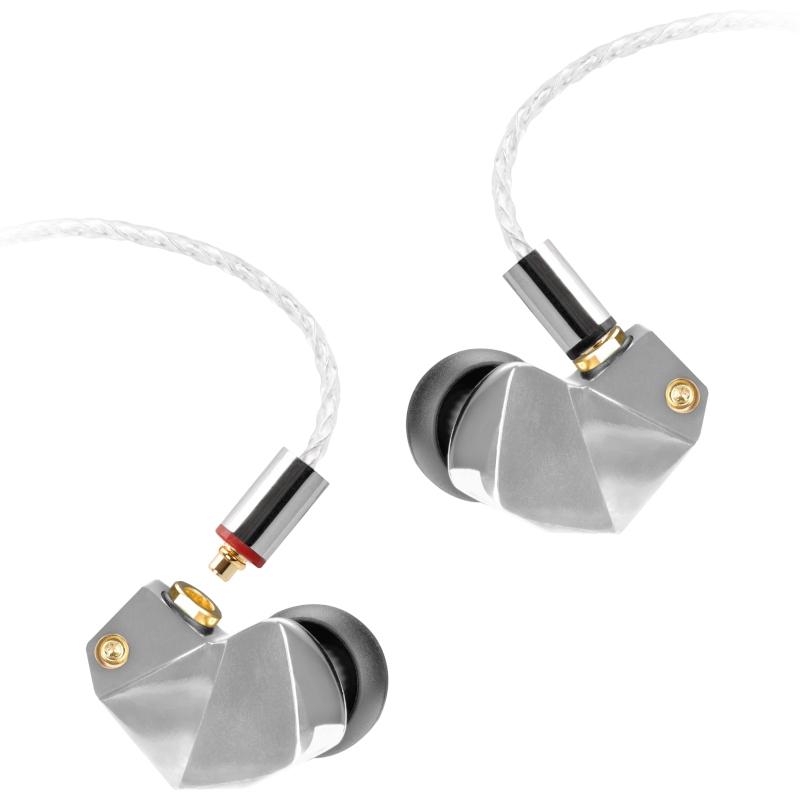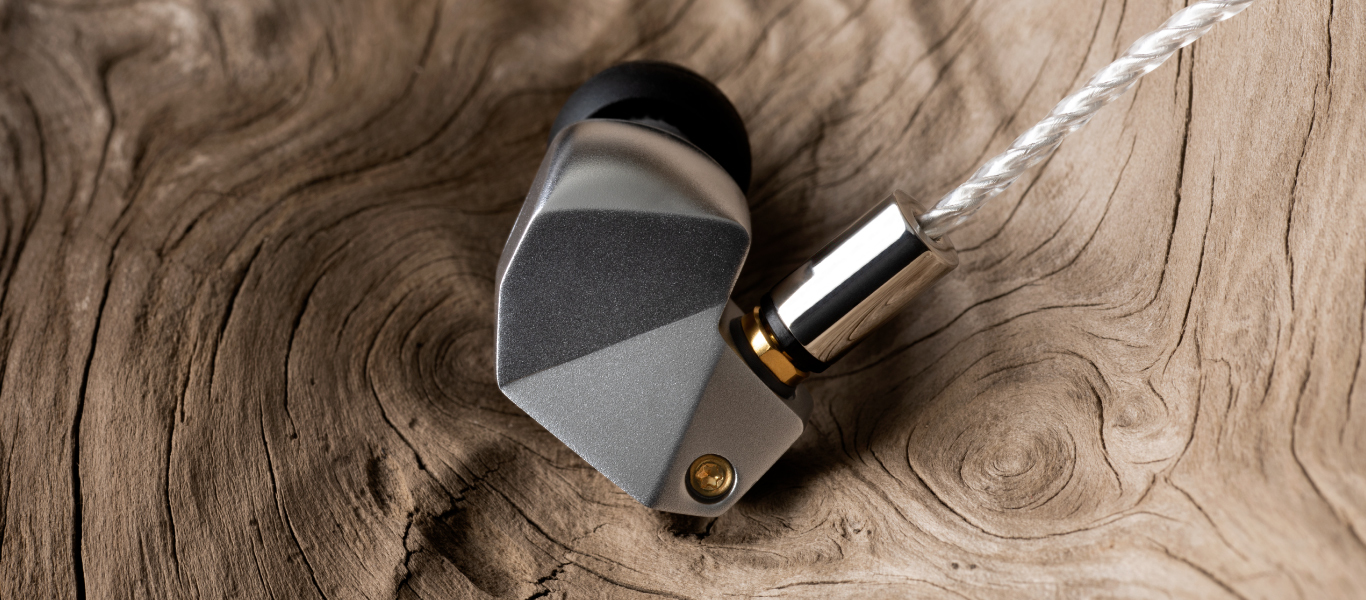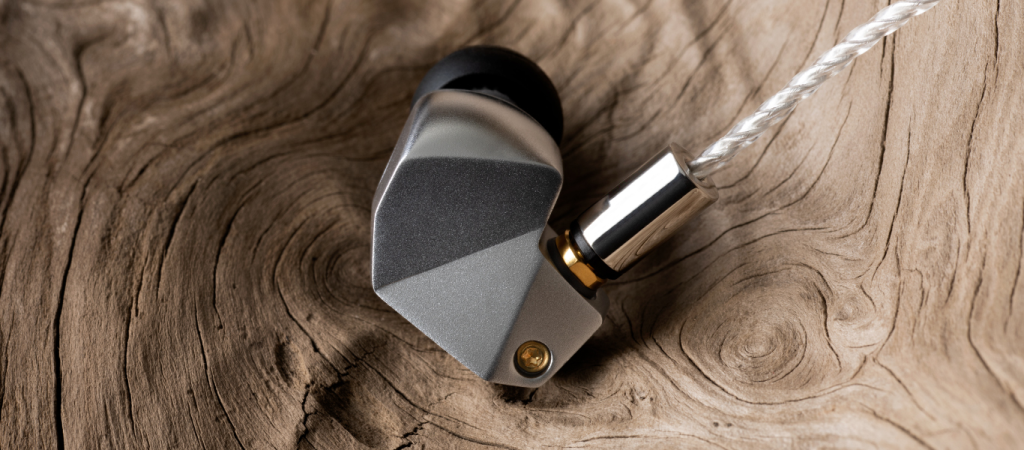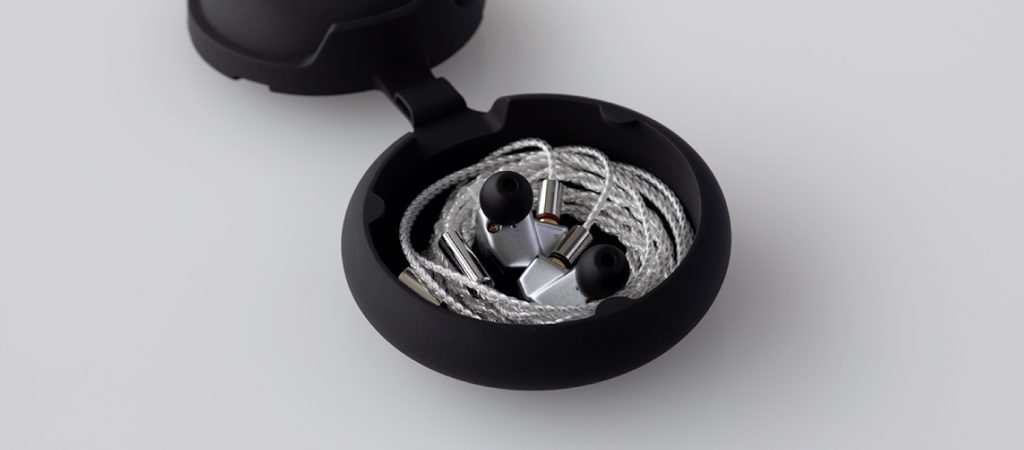Features
- Dual Balanced Armature drivers in-ear monitor earphones
- Detachable silver-coated cable employs MMCX connectors
- Well suited for vocals from animated soundtracks and EDM
- Metal Injection Moulding (MIM) stainless steel housing

£439


| Product code | FI-B3B2SSD |
|---|---|
| Housing | Stainless steel (frost silver) |
| Driver | 2BA (Networkless) |
| Connector | MMCX |
| Cable | OFC silver-coated cable |
| Sensitivity | 102dB |
| Impedance | 19Ω |
| Weight | 36g |
| Cord length | 1.2m |

Sound design has been undertaken with consideration to the relationship between the spatial impression and dynamic range of music, and the physical characteristics of earphones and headphones. Through research into the relationship between spaciousness, clarity and dynamic range of musical recordings, and the physical characteristics of earphones and headphones, we have learned that deeper enjoyment of music can be achieved through the target curves and driver design well suited to the sound design of music recordings.
The B3 model was designed with particular emphasis on clarity. It caters to those who wish to have the delicate sound of each musical instrument delivered gorgeously even from live recordings and enjoy tight vocals from animated soundtracks and EDM. It comes equipped with a standard silver coat cable and employs an MMCX connector that makes it possible to switch cables in the event of a severed connection.

Sound design with consideration to the relationship between the spatial impression and dynamic range of music as well as the physical characteristics of earphones and headphones
Sound design for these models has been undertaken with attention to the relationship between spatial impression and dynamic range of music, and the physical characteristics of earphones and headphones. We have categorized sound creation on music recording onto these two axes: spatial impression and dynamic range.
One way of thinking regards distance perception. Classical and jazz recordings are thought to be performed with an emphasis on aspects of spaciousness, such as a sense of distance, broadness and reverberation. On the other hand, with rock, pop and many of the recent animation soundtrack recordings, spaciousness is not as highly emphasized. There is thought to be a greater emphasis on clarity, which brings the various instruments and vocals to the front.
Another approach is dynamic range – in other words, changes in loudness over time. If the dynamic range is wide, naturally it is possible to use the change in loudness over time to achieve a more dynamic expression of music. But, there are some types of music for which narrower dynamic range recordings are preferable to allow each of the instruments and vocals to ordinarily appear before the listener’s eyes.
The difference between these two ways of thinking pertains not to which is superior but rather differences in how music is composed and what is demanded of it. In classical music, and that played by the orchestra, in particular, the spatial orientation of instruments is particularly important. Stringed instruments are positioned nearest to the audience with wind and percussion placed behind them. Should the balance between the spatial orientation and volume of each group of instruments collapse, the music would disintegrate. For that reason, uniform clarity of sound that allows each instrument to appear before the eyes of the listener is not demanded of this type of music. Even for classical music, a string quartet, for example, would have a narrow dynamic range and the clarity of each instrument would be more prominent. For rock and pops, on the other hand, spaciousness is not as necessary as for classical music, and so there is a greater emphasis on clarity than spaciousness. These preconditions are very important, particularly for earphone and headphone listening, and it has become apparent that the implementation of appropriate target curves and driver design results in deeper enjoyment of music.
Please refer to the below graph with the spaciousness and clarity of music set on the X-axis and dynamic range set on the Y-axis. Whereas our E3000 model was designed with the aim at the very centre of the graph, the B series is positioned outside that area.
In other words, in comparison to the E series, the B series is positioned more as a model to listen to a specific type of music, and you might become so enthralled with it that you can’t do without it. This attraction is typical of the products we produce.
The B3 model was designed with particular emphasis on clarity. It caters to those who wish to have the delicate sound of each musical instrument delivered gorgeously even from live recordings and enjoy tight vocals from animated soundtracks and EDM. It comes equipped with a standard silver coat cable and employs an MMCX connector that makes it possible to switch cables in the event of a severed connection.

The front-rear two-piece separable construction makes the product easy to repair for a lifetime.
MIM is a process by which powdered metal is mixed with a binder to form a resin in the desired shape and applying high-temperature sintering to achieve the desired form.
Employs two Balanced Armature (BA) drivers, one for the high-frequency band, and one for mid and bass. The sound fed to each driver is not parsed into specific frequency bands by a network.
The superior feeling of fit of an earphone is determined by the presence or lack of a feeling of pressure. There are products on the market with an ergonomically praised organically curved surface that should be suitable for placement somewhere in the ear, but because the holding positions for those shapes place pressure on the ear, fatigue accumulates over time.
As a result of having newly returned to the basics of our thinking about fit with little sense of pressure, we have arrived at a way of thinking that involves 2 holding positions and 1 assisting position to not slip out.
Much the same as a tripod, a stable fit can be secured for any chassis with 3 holding positions.
In the green section of the diagram below (earpiece) is 1 position, the blue section (Tragus) is 1 position, and the pink-coloured section (cavity of the concha) is 1 position for a total of 3 positions. The tragus secures an earphone with an earpiece in such a way that makes it difficult to feel stress even when force is applied, and the pink section adopts a fit method in which the earphone is supported in place by the cavity of concha in such a manner as to not slip out. By clearly identifying the points of contact, more people’s ears can conform to a fit with no sense of pressure.
If there is no sense of pressure, the fit of the earphone will be felt to be that much more comfortable, and in this way, it achieves the superior fit of a seemingly customized earphone.

The MMCX connector was developed in-company. We’ve used high-purity OFC silver-coated cables that provide a wide sound stage. These jointly-developed cables were originally designed by and are currently manufactured by the well-renowned Junkosha corporation to be used with the supercomputer “Kei” due to their fast signal transmission speed. The insulator film is made from PFA which was also developed by Junkosha who used their extensive know-how through the JUNFLON® brand to create the ultimate in low-permittivity material. The outer tube is made from PVC for maximum flexibility. The user will experience surprising flexibility that both makes the cable extremely easy to use and reduces the likelihood of microphonics. In addition, the MMCX plug and the 3.5 mm mini-plug tend to disconnect so we’ve far exceeded the regular QA pass criteria of a 5,000-time bend test by changing the connection design to one that can withstand more than 50,000 bends.
* Junkosha: The Japanese corporation Junkosha develops and manufactures products such as high-speed coaxial cables that boast the world’s fastest transmission speed at 95% the speed of light, as well as cables for demanding fields such as marine and aerospace, healthcare and power generation facilities. These special cables require a high level of technology and centre around fluoropolymers. Junkosha’s cables are often called by the brand name JUNFLON® and have earned the tremendous trust of engineers requiring special-purpose cables.


| Colour | Silver |
|---|

As a company our primary goal is to provide a seamless service that results in customer satisfaction. We aim to deliver within 3 working days. Unfortunately, there may be occasions where this time frame may not be met due to unforeseen circumstances; in this instance, we deliver product/s as soon as we can. All delivery charges are included within the prices quoted, unless otherwise specified.
All small items are usually delivered between 9am and 6pm, on a Monday to Friday, unless a Saturday delivery is requested. Follow My Parcel is an industry-changing innovation from DPD Local, which will give your customers unparalleled levels of information and peace of mind.Not only will your customers receive a one hour delivery timeslot, but they’ll now also be able to track the progress of their parcels on a map as our drivers make their way to the delivery addresses. Follow My Parcel will:
